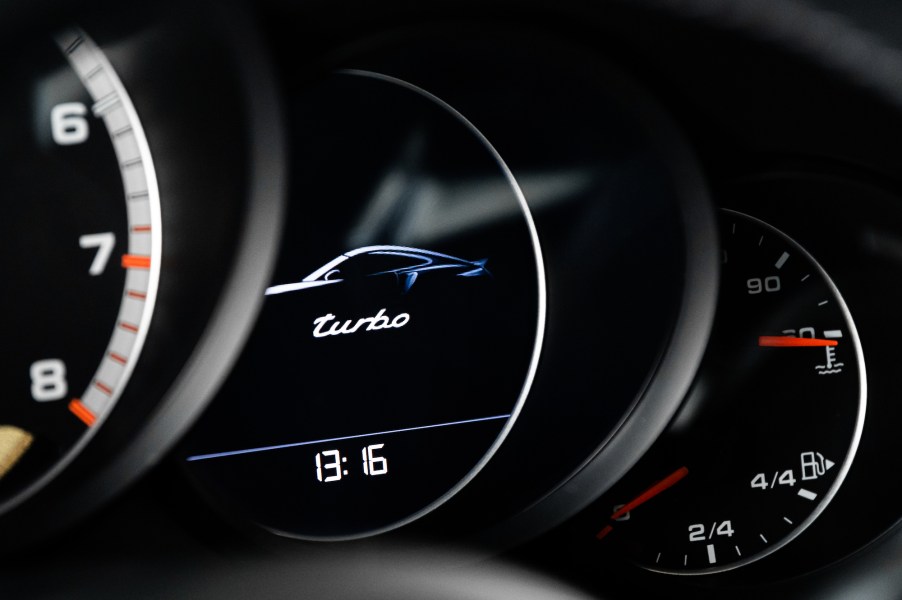
5 Ways to Get Rid of Turbo Lag According to MotorTrend
Turbochargers are supplements that help your engine gain power to run your vehicle by compressing more air to ignite. However, having a turbo in your car isn’t always helpful because these units cause turbo lag. So, what can you do about it?
The difference between turbocharged and naturally aspirated engines

According to Hot Cars, a naturally aspirated engine uses atmospheric pressure to push air into the cylinders. However, to produce high-power outputs, the engine needs to be larger. These were the most commonly used units for many years. Nowadays, turbocharged ones seem to be slowly replacing them.
Turbo engines work differently by bringing in air and compressing it. Once compressed, it’s forced into the engine, where it will combust and produce torque, providing power to the vehicle. How much power will depend on the amount of air the unit takes in. That extra boost can help a smaller unit generate as much energy as a larger one.
However, these units aren’t quite as reliable as the naturally aspirated ones, and they tend to lag while waiting for the air to compress and get pushed into the engine. According to MotorTrend, there are five ways to help you deal with that lag.
1. Use a Wastegate system
One of the simplest ways to reduce turbo lag in your motor is by adding a smaller turbo housing to the engine. This will generate quicker pressure, so the engine gets the boost of compressed air faster. However, this will also cause heat pressure at higher RPMs. A wastegate will allow the turbo to release extra exhaust to prevent damage to your engine. If you choose this route, there are at least four types of housings you can use for this setup. So, you are given some options there.
2. Nitrous Oxide
Another relatively easy way to prevent too much turbo lag is by adding nitrous oxide to the engine. It will increase pressure in the cylinders, ultimately producing a turbo boost much faster. Race car drivers have used them to increase horsepower in their engines to give them an edge over their competitors.
Before using this route, be aware that more oxygen will get introduced into the engine this way. So, ensure your air-to-fuel ratio is balanced, or you can damage the unit.
3. Narrowing the powerband
The powerband is the range of RPMs an engine operates to produce the most energy output. Narrowing the powerband would reduce turbo lag significantly because the turbo will continuously be operating near prime-peak performance without waiting for torque to build up.
4. Sequential turbocharging on the engine
Sequential turbocharging works by dividing up two turbos working at two different RPMs. One will perform at the shorter end, while a second turbo would kick in and handle the speed from mid-range on up.
For example, one could run at 2,000 to 4,000 RPMs, and the other turbo could kick in when it goes past that. One thing to note is that smaller housing works better for the low end because it can reach its peak performance quicker.
However, these work better with turbocharged diesel engines. The process is more complicated on gasoline-powered ones, and it costs quite a bit of money to do it, which is why this process isn’t done often.
5. Increasing the compression ratio
Back in the 1980s, cars with turbochargers were set to lower compression ratios of 8:1 to prevent the excessive heat they generated. But, they ran at low power until energy built up and was released into the engine.
However, we have improved intercoolers and fuel, so compression rates have begun increasing, and we now see vehicles with 9:1 and 10:1 figures. According to Jalopnik, you will need a higher octane fuel to run an engine with higher compression ratings. If you use lower octane gasoline, you risk early detonation in the cylinder, which will cause an engine knock.
Turbocharged engines are fast becoming popular. They enable your car to experience peak performance with some serious power boost. However, it takes time to build up torque to get up to speed. That’s when Turbo lag occurs. Follow these five steps, and you could reduce that lag significantly.


